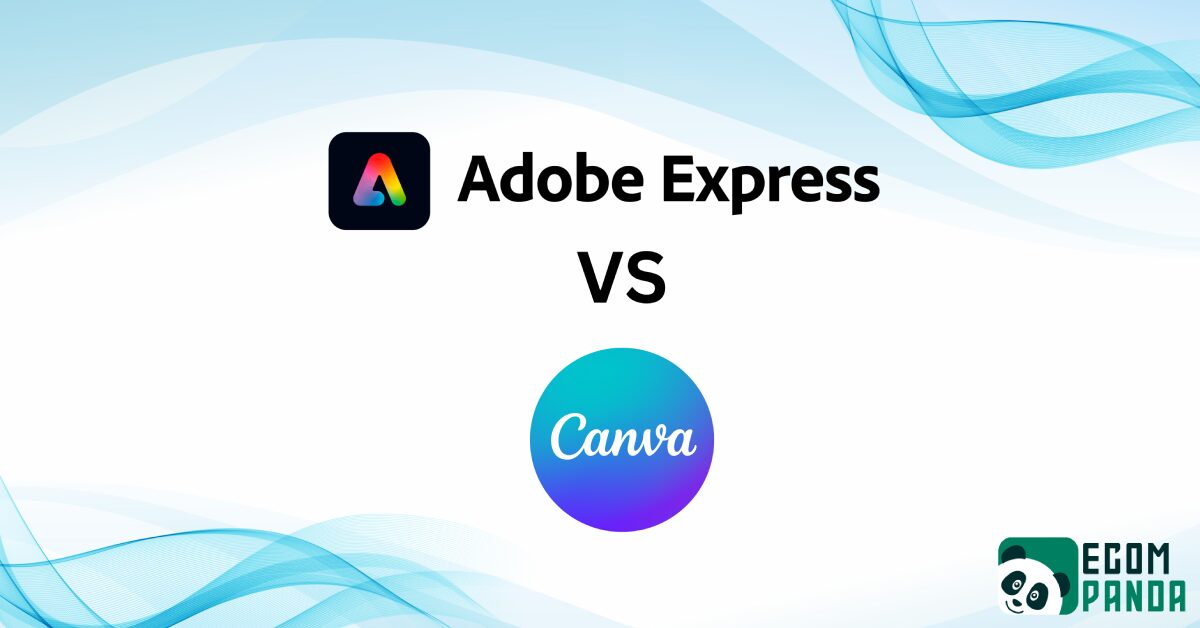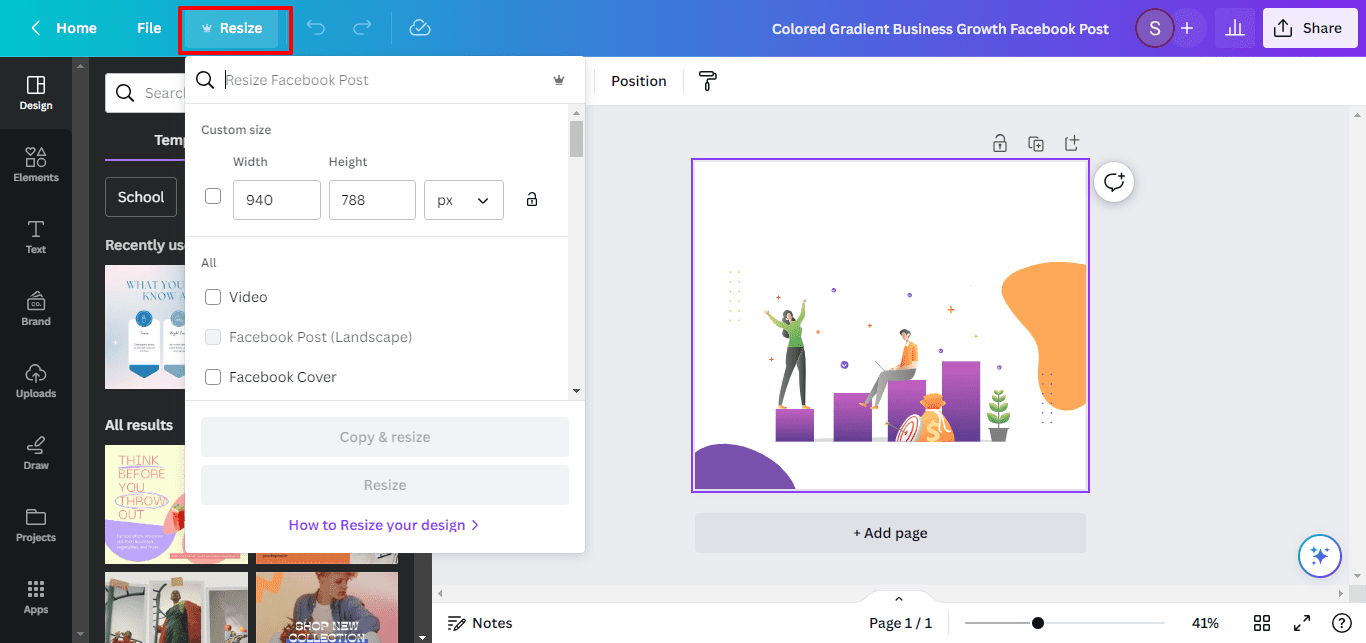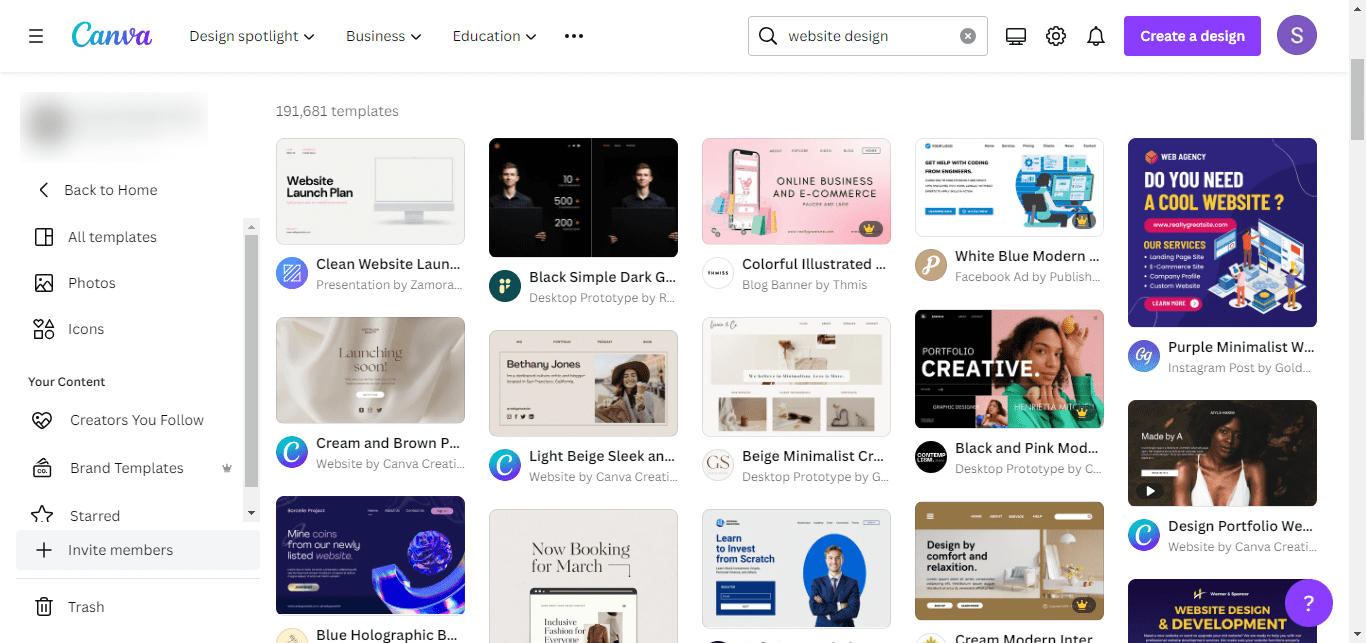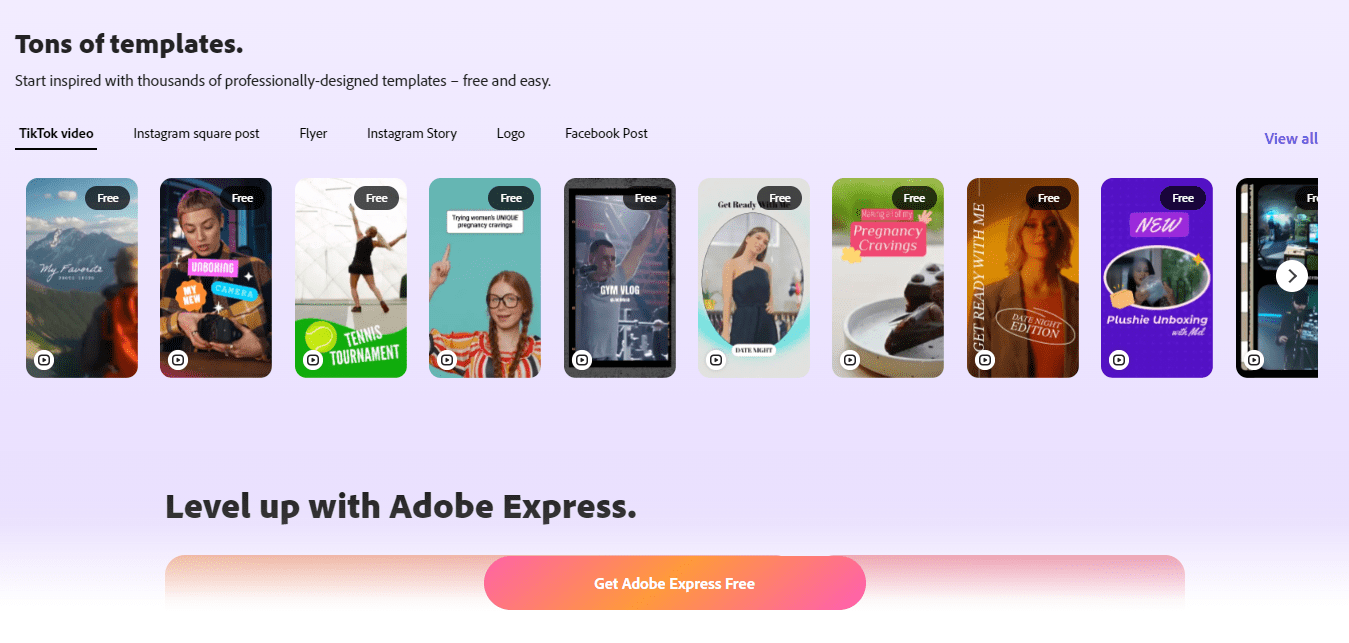Adobe Express vs Canva
Introduction
In the ever-evolving world of digital design, two platforms have emerged as leaders in the field: Adobe Express and Canva. Both tools have become indispensable for designers, marketers, and businesses alike, offering a wide array of features to create stunning visuals.
Overview of Adobe Express and Canva
Adobe Express, part of the renowned Adobe suite, provides a robust set of design tools catering to professionals seeking advanced customization and control. Canva, on the other hand, has made a name for itself with its user-friendly interface and extensive library of templates, appealing to both novices and experts.
Purpose and Importance of Design Tools
The importance of visual content in today’s digital landscape cannot be overstated. From social media posts to business presentations, compelling visuals are key to engaging audiences and conveying messages effectively. Tools like Adobe Express and Canva empower users to create professional-quality designs without the need for extensive graphic design skills. They democratize design, making it accessible to all.
Scope of the Comparison
This article aims to provide a comprehensive comparison between Adobe Express and Canva, delving into their features, pricing, usability, and more. Whether you are a seasoned designer, a small business owner, or someone just starting in the world of design, this comparison will offer insights to help you choose the tool that best fits your needs and preferences.
By examining the unique strengths and weaknesses of each platform, we will explore how they cater to different user needs and what sets them apart in the competitive design tool market.
Table of Contents

Resizing Your Design
In the realm of digital design, resizing is a fundamental task that often needs to be performed with precision and ease. Both Adobe Express and Canva offer resizing features, but they approach this task in different ways. Here’s a closer look at how these platforms handle resizing and the pros and cons of each tool.
Comparison of Resizing Features
Adobe Express provides a more professional set of resizing tools, allowing for detailed control over dimensions, aspect ratios, and scaling. It offers options to lock proportions and manually input exact measurements, catering to those who require precision.

Canva, on the other hand, emphasizes simplicity and user-friendliness. Its resizing feature is more intuitive, with drag-and-drop functionality and preset sizes for common formats like social media posts, banners, and presentations.

Tools for Resizing in Adobe Express and Canva
Adobe Express:
- Manual input for exact dimensions
- Proportional scaling with lock feature
- Customizable presets for different media
Canva:
- Drag-and-drop resizing
- Preset sizes for various platforms
- Easy toggling between different dimensions
Pros and Cons of Each Tool
Adobe Express:
- Pros: Greater control, precision, and customization
- Cons: May be overwhelming for beginners; requires more time to master
Canva:
- Pros: User-friendly, quick adjustments, suitable for non-designers
- Cons: Less control over exact measurements; limited customization
In conclusion, the choice between Adobe Express and Canva for resizing depends on the user’s needs and expertise. Adobe Express offers a more professional and precise approach, while Canva prioritizes ease of use and speed. Understanding the specific requirements of your design project will guide you in selecting the tool that best aligns with your goals.
Stock Photography
In the age of visual communication, stock photography plays a vital role in enhancing designs and adding context to content. Both Adobe Express and Canva provide access to extensive libraries of royalty-free photos, but they differ in their offerings, licensing, and costs. Here’s an in-depth look at how these two platforms approach stock photography.
Access to Royalty-Free Photos
Adobe Express and Canva both offer vast collections of royalty-free images that can be used in various design projects. These images range from professional photography to illustrations, catering to different styles and themes.
- Adobe Express:

- Access to Adobe Stock, a premium library with millions of high-quality images
- Integration with other Adobe tools for seamless design workflow
- Canva:

- Extensive library with both free and premium images
- Collaboration with photographers and artists for unique content
Comparison of Image Libraries, Licensing, and Costs
Adobe Express:
- Library: Adobe Stock offers a more professional and curated collection
- Licensing: Flexible licensing options for different usage rights
- Costs: Subscription-based access with various pricing tiers
Canva:
- Library: Diverse collection with a mix of free and premium content
- Licensing: Simple licensing for most use cases, with clear guidelines
- Costs: Free access to basic library; premium images available for purchase
Adobe Express vs Canva’s Offerings
While Adobe Express provides a more refined and professional library through Adobe Stock, it often comes at a higher cost. Canva’s approach is more accessible, offering a wide variety of images, including many free options.
Adobe Express:
- High-quality, professional images
- Flexible licensing for commercial use
- Higher costs for premium content
Canva:
- Accessible and diverse library
- Affordable options for various budgets
- Limited access to exclusive or specialized content
In conclusion, the choice between Adobe Express and Canva for stock photography depends on the specific needs, budget, and preferences of the user. Adobe Express caters to professionals seeking high-quality, curated content, while Canva offers a more accessible and budget-friendly approach. Understanding your project’s requirements and target audience will help you make the best choice between these two platforms.
Photo Editing
Photo editing is an essential aspect of modern design, allowing creators to enhance, customize, and transform images to fit their vision. Both Adobe Express and Canva offer a range of photo editing tools, but they differ in their capabilities and ease of use. This section explores the editing features, background removal options, and overall image editing capabilities of both platforms.
Editing Tools and Features
- Adobe Express:

- Comprehensive editing suite with professional-grade tools
- Advanced options for color correction, retouching, and effects
- Integration with other Adobe products for a seamless workflow
- Canva:

- Intuitive editing interface with drag-and-drop functionality
- Basic to intermediate tools for cropping, filtering, and adjustments
- User-friendly approach suitable for beginners and non-designers
Background Removal and Customization
Removing and customizing backgrounds is a common task in design, and both platforms offer solutions:
Adobe Express:
- Precision background removal with manual adjustments
- Options for adding custom backgrounds and textures
Canva:
- One-click background removal for simple images
- Library of pre-designed backgrounds for quick customization
Comparison of Image Editing Capabilities
Adobe Express:
- Pros: Professional tools, high precision, extensive customization
- Cons: Steeper learning curve, may be overwhelming for beginners
Canva:
- Pros: Easy to use, quick adjustments, suitable for basic to intermediate editing
- Cons: Limited advanced editing options, less precision in complex tasks
In conclusion, Adobe Express offers a more professional and detailed approach to photo editing, catering to designers and photographers who require advanced tools and precision. Canva, on the other hand, prioritizes simplicity and accessibility, making it a great choice for those who need quick and effective editing without the complexity.
The choice between Adobe Express and Canva for photo editing will depend on the specific needs, expertise, and goals of the user. Whether you’re looking for in-depth editing capabilities or a user-friendly platform for basic adjustments, understanding the features and limitations of both tools will guide you in selecting the one that best aligns with your project.
Layer Controls
Layer controls are a fundamental aspect of digital design, allowing designers to organize, manipulate, and fine-tune different elements within a composition. Both Adobe Express and Canva offer layer control features, but they differ in their functionalities and user experience. This section explores how these platforms handle layer management, comparing their control panels and overall capabilities.
Managing and Accessing Layers
- Adobe Express:

- Advanced layer management with options for grouping, locking, and ordering
- Detailed control over opacity, blending modes, and layer effects
- Integration with other Adobe tools for complex layer manipulation
- Canva:

- Simplified layer control with drag-and-drop functionality
- Easy access to basic layer arrangements and visibility toggles
- Intuitive interface suitable for beginners and non-designers
Comparison of Layer Control Panels
Adobe Express:
- Professional-grade layer panel with a wide array of tools and options
- Customizable workspace to suit individual preferences and workflows
- Suitable for detailed and complex design projects
Canva:
- Streamlined layer panel with essential controls and clear icons
- User-friendly design for quick navigation and adjustments
- Ideal for simpler designs and quick content creation
Adobe Express and Canva’s Functionalities
Adobe Express:
- Pros: High precision, extensive customization, robust layering capabilities
- Cons: Steeper learning curve, may be complex for casual users
Canva:
- Pros: Accessible, easy to use, suitable for basic layer management
- Cons: Limited advanced layering options, less flexibility in intricate designs
In conclusion, Adobe Express offers a more professional and comprehensive approach to layer controls, catering to experienced designers who require detailed manipulation and customization. Canva, on the other hand, focuses on simplicity and ease of use, making it an attractive option for those who need basic layer management without the complexity.
The choice between Adobe Express and Canva for layer controls will depend on the specific needs, expertise, and complexity of the design project. Understanding the features, strengths, and limitations of both platforms will guide you in selecting the tool that best aligns with your creative goals.
Storage Space
In the digital design landscape, storage space is a crucial consideration, especially for professionals and businesses handling large volumes of assets. Both Adobe Express and Canva provide storage solutions, but they differ in their offerings, pricing, and overall approach. This section explores the storage options available in both platforms, with a particular focus on Canva’s advantage in this area.
Comparison of Storage Offerings
Adobe Express:
- Limited free storage with options to purchase additional space
- Integration with Adobe Creative Cloud for seamless file management
- Various plans to suit different user needs and project sizes
Canva:
- Generous free storage with the option to upgrade for more space
- Easy access to stored designs, templates, and assets
- Collaboration features to share and manage files with team members
Free and Premium Storage Options
Adobe Express:
- Free tier with basic storage capacity
- Premium plans with increased storage and additional features
- Pricing based on storage needs and user requirements
Canva:
- Free tier offering substantial storage for most casual users
- Premium plans with unlimited storage and advanced file management
- Affordable options for individuals, businesses, and teams
Canva’s Advantage in Storage Space
Canva’s approach to storage is notably more generous, especially for free users. The platform provides ample space for storing designs, images, and templates, even in its free tier. This makes Canva an attractive option for those who need to manage multiple projects without worrying about storage limitations.
Pros of Canva’s Storage:
- Accessible and user-friendly file management
- Affordable premium options with unlimited storage
- Integration with Canva’s design tools for a cohesive experience
Cons of Canva’s Storage:
- Limited advanced file organization features
In conclusion, while both Adobe Express and Canva offer viable storage solutions, Canva stands out with its generous free offering and affordable premium options. Adobe Express caters to professionals who may require more specialized storage solutions, but Canva’s approach makes it a compelling choice for a wide range of users.
The choice between Adobe Express and Canva for storage space will depend on the specific needs, budget, and preferences of the user. Understanding the offerings, pricing, and advantages of both platforms will guide you in selecting the one that best aligns with your storage requirements.
Creating Videos with Canva and Adobe Express
In addition to graphic design, both Canva and Adobe Express have ventured into the realm of video creation, offering tools and features to craft engaging videos. From editing capabilities to transitions, templates, and stock footage, these platforms provide various options to suit different needs. This section explores the video creation features of both platforms, including a look at Adobe Express’s upcoming updates.
Video Editing Capabilities and Features
- Canva:

- Intuitive video editor with drag-and-drop functionality
- Basic editing tools for trimming, cropping, and adding text
- Library of pre-designed video templates for various themes and occasions
- Adobe Express:

- Professional-grade video editing suite with advanced tools
- Precision control over effects, transitions, and color grading
- Integration with Adobe’s other video tools for a seamless workflow
Comparison of Transitions, Templates, and Stock Footage
Canva:
- Wide range of transitions for smooth scene changes
- Extensive collection of customizable video templates
- Access to free and premium stock footage for various projects
Adobe Express:
- Advanced transition effects with customizable settings
- Professional templates designed for different industries and styles
- Integration with Adobe Stock for high-quality video clips and assets
Adobe Express’s Upcoming Updates
Adobe Express continues to evolve, with upcoming updates promising to enhance its video editing capabilities further. Some anticipated features include:
- Improved collaboration tools for team projects
- Enhanced AI-powered editing functions for efficiency
- Expanded library of effects, transitions, and templates
In conclusion, Canva offers a user-friendly approach to video creation, suitable for beginners and those looking for quick and simple solutions. Adobe Express, on the other hand, caters to professionals and enthusiasts seeking advanced control and customization. With Adobe’s commitment to continuous improvement, users can expect even more robust video editing capabilities in the near future.
The choice between Canva and Adobe Express for video creation will depend on the specific needs, expertise, and goals of the user. Whether you’re looking for accessible tools for social media videos or professional-grade features for commercial projects, understanding the offerings of both platforms will guide you in selecting the one that best aligns with your creative vision.
Web Design

In the era of digital presence, web design tools have become essential for businesses, creators, and individuals looking to establish an online identity. Both Canva and Adobe Express offer website building features, but they differ in their approach to templates, publishing options, and overall usability. This section delves into the web design capabilities of both platforms, with a special focus on Canva’s edge in website templates.
Website Building Tools and Features
Canva:
- Wide range of transitions for smooth scene changes
- Extensive collection of customizable video templates
- Access to free and premium stock footage for various projects
Adobe Express:
- More advanced web design suite with professional-grade tools
- Detailed control over design elements, coding, and responsive design
- Integration with other Adobe products for a cohesive design experience
Comparison of Templates, Publishing Options, and Usability
Canva:
- Extensive library of customizable website templates for various industries
- One-click publishing with options for custom domains and SEO optimization
- Intuitive interface suitable for beginners and non-designers
Adobe Express:
- Professional templates with options for customization and branding
- Flexible publishing options, including export to various platforms
- Steeper learning curve, catering to more experienced designers
Canva’s Edge in Website Templates
Canva’s approach to website templates stands out for its accessibility and variety. The platform offers a wide range of pre-designed templates that cater to different needs, styles, and industries. This makes Canva an attractive option for those looking to quickly create visually appealing websites without the need for extensive design skills.
Pros of Canva’s Website Templates:
- Diverse collection catering to various themes and purposes
- Easy customization with simple editing tools
- Affordable options, including free templates for basic use
Cons of Canva’s Website Templates:
- Limited advanced customization and coding options
In conclusion, while both Canva and Adobe Express offer viable solutions for web design, they cater to different audiences. Canva’s user-friendly approach and extensive template library make it ideal for those seeking quick and accessible web design solutions. Adobe Express, on the other hand, provides more advanced tools and customization options, suitable for professional designers and developers.
The choice between Canva and Adobe Express for web design will depend on the specific needs, expertise, and goals of the user. Understanding the features, templates, publishing options, and usability of both platforms will guide you in selecting the tool that best aligns with your web design project.
Pricing and Plans
Choosing the right design platform often comes down to budget considerations, and understanding the pricing structure is vital for making an informed decision. Both Canva and Adobe Express offer various pricing plans, free trials, and special offers to cater to different needs and budgets. This section provides a detailed analysis of the pricing for both platforms, highlighting the value for money and available options.
Detailed Analysis of Pricing for Both Platforms
- Canva:
- Adobe Express:
Individual Plan
- Professional-grade tools
- Additional Storage
- Adobe integrations
Free Trials, Special Offers, and Value for Money
- Canva:
- Free Trial: 30-day free trial for Pro Plan
- Special Offers: Discounts for educators, nonprofits, and students
- Value for Money: Affordable pricing with a wide range of features, suitable for individuals and small businesses
- Adobe Express:
- Free Trial: 7-day free trial for Individual Plan
- Special Offers: Bundled pricing with other Adobe products, discounts for students and teachers
- Value for Money: Higher pricing with professional tools, catering to designers, photographers, and businesses
In conclusion, Canva’s pricing structure is geared towards accessibility and affordability, making it a popular choice for casual users, small businesses, and those on a budget. Adobe Express, on the other hand, offers more advanced features and professional tools, justifying its higher pricing tier.
The choice between Canva and Adobe Express for pricing and plans will depend on the specific needs, budget, and preferences of the user. Whether you’re looking for a cost-effective solution with essential tools or a professional platform with advanced capabilities, understanding the pricing, free trials, and special offers of both platforms will guide you in selecting the one that best aligns with your financial considerations.
User Interface and Experience
The user interface and overall experience play a significant role in the success and appeal of any design platform. Both Canva and Adobe Express have invested in creating user-friendly environments, but they differ in their approach to dashboards, design experience, speed, responsiveness, and user satisfaction. This section explores these aspects, providing a comparison between the two platforms.
Comparison of Dashboards, Design Experience, and Ease of Use
Canva:
- Dashboard: Intuitive and clean interface with easy access to tools, templates, and projects
- Design Experience: Drag-and-drop functionality, simple customization, and guided tutorials
- Ease of Use: Suitable for beginners and non-designers, with minimal learning curve
Adobe Express:
- Dashboard: Professional and feature-rich interface with customizable workspaces
- Design Experience: Advanced tools, precision control, and integration with other Adobe products
- Ease of Use: Catering to experienced designers, with more complexity and a steeper learning curve
Speed, Responsiveness, and User Satisfaction
Canva:
- Speed: Quick loading times and smooth performance across various devices
- Responsiveness: Adaptive design for mobile and tablet use, with dedicated apps
- User Satisfaction: High ratings for simplicity, accessibility, and customer support
Adobe Express:
- Speed: Robust performance with more demanding system requirements
- Responsiveness: Optimized for professional use, with some adaptability for different devices
- User Satisfaction: Praised for advanced features, quality output, and creative flexibility
In conclusion, Canva’s user interface and experience are geared towards accessibility and ease of use, making it an attractive option for those new to design or looking for quick solutions. Adobe Express, on the other hand, offers a more professional and comprehensive environment, appealing to seasoned designers and those seeking advanced capabilities.
The choice between Canva and Adobe Express for user interface and experience will depend on the specific needs, expertise, and preferences of the user. Whether you value simplicity and speed or require detailed control and professional tools, understanding the dashboards, design experience, responsiveness, and user satisfaction of both platforms will guide you in selecting the one that best aligns with your creative journey.
Templates and Features
Templates and design features are the building blocks of any creative platform, allowing users to craft unique and visually appealing projects. Both Adobe Express and Canva offer a wide array of templates and features, but they differ in their approach to text, photos, shapes, and backgrounds. This section provides an overview of the available templates and design features in both platforms, comparing Adobe Express and Canva’s offerings.
Overview of Available Templates and Design Features
- Canva:



- Templates: Extensive library of pre-designed templates for various themes, industries, and occasions
- Design Features: User-friendly tools for text editing, image manipulation, shape creation, and background customization
- Adobe Express:


- Templates: Professional-grade templates with options for customization, branding, and industry-specific designs
- Design Features: Advanced tools for precise text control, photo editing, shape manipulation, and background effects
Comparison of Text, Photos, Shapes, and Backgrounds
- Text:
- Canva: Simple text editing with various fonts, sizes, and styles
- Adobe Express: Detailed text control with advanced typography, effects, and alignment options
- Photos:
- Canva: Easy photo manipulation with filters, cropping, and basic adjustments
- Adobe Express: Professional photo editing with advanced tools, effects, and integration with Adobe Stock
- Shapes:
- Canva: Library of pre-designed shapes with options for color, size, and rotation
- Adobe Express: Precision shape creation with customizable properties, effects, and layering
- Backgrounds:
- Canva: Wide range of background options, including colors, patterns, and images
- Adobe Express: Advanced background customization with gradients, textures, and professional effects
Adobe Express vs Canva’s Offerings
- Canva:
- Strengths: Accessibility, variety of templates, simplicity of design features
- Weaknesses: Limited advanced customization and professional tools
- Adobe Express:
- Strengths: Professional quality, advanced customization, integration with other Adobe products
- Weaknesses: Steeper learning curve, higher pricing for premium features
In conclusion, Canva’s templates and features cater to a wide audience, offering accessibility and ease of use for casual designers and small businesses. Adobe Express, on the other hand, provides professional-grade options, appealing to experienced designers and industry professionals.
The choice between Canva and Adobe Express for templates and features will depend on the specific needs, expertise, and goals of the user. Understanding the offerings, strengths, and weaknesses of both platforms will guide you in selecting the tool that best aligns with your creative vision.
Collaboration and Team Features
In today’s interconnected world, collaboration and team functionalities are essential for efficient design workflows. Both Adobe Express and Canva recognize this need and have implemented features to facilitate collaboration, sharing, commenting, and team management. This section explores these aspects, providing a comparison between the two platforms.
Collaboration Tools and Team Functionalities
- Canva:
- Collaboration Tools: Real-time collaboration, shared editing, and commenting
- Team Functionalities: Team folders, role assignments, and centralized brand assets
- Adobe Express:
- Collaboration Tools: Advanced collaboration with version tracking, shared libraries, and commenting
- Team Functionalities: Team projects, access control, and integration with Adobe Creative Cloud
Comparison of Sharing, Commenting, and Team Management
- Sharing:
- Canva: Easy sharing via links, email, and social media; embed options for websites
- Adobe Express: Professional sharing with customizable permissions, export options, and Adobe integration
- Commenting:
- Canva: Simple commenting system for feedback and communication within the platform
- Adobe Express: Detailed commenting with tagging, threaded conversations, and review workflows
- Team Management:
- Canva: User-friendly team management with invitations, role assignments, and shared resources
- Adobe Express: Advanced team management with detailed access control, project tracking, and collaboration across Adobe products
In conclusion, Canva’s collaboration and team features are designed for accessibility and simplicity, making it suitable for small teams, freelancers, and casual collaborators. Adobe Express, on the other hand, offers a more robust and professional collaboration environment, catering to larger teams, businesses, and design professionals.
The choice between Canva and Adobe Express for collaboration and team features will depend on the specific needs, size, and goals of the team. Whether you’re looking for straightforward sharing and commenting or require advanced collaboration tools and team management, understanding the offerings of both platforms will guide you in selecting the one that best aligns with your collaborative needs.
Pros and Cons
Selecting the right design platform requires a nuanced understanding of the strengths and weaknesses of the available options. Both Adobe Express and Canva have distinct advantages and disadvantages, catering to different use cases and audiences. This section provides a detailed analysis of the pros and cons of both platforms, along with specific use cases and recommendations.
Adobe Express
Pros:
- Professional Tools: Advanced editing capabilities, precision control, and integration with other Adobe products
- Collaboration: Robust collaboration features, including version tracking and detailed commenting
- Customization: High level of customization, including professional templates and advanced background effects
- Quality: Professional-grade quality suitable for designers, photographers, and businesses
Cons:
- Learning Curve: More complex interface, requiring time to master
- Pricing: Higher pricing for premium features and plans
- System Requirements: More demanding on system resources
- Use Cases: Ideal for professional designers, businesses, and individuals seeking advanced tools and customization
- Recommendations: Best suited for those who require professional-grade tools and are willing to invest in learning the platform
Canva
Pros:
- Accessibility: User-friendly interface with drag-and-drop functionality
- Variety: Extensive library of templates, shapes, and backgrounds
- Collaboration: Real-time collaboration, shared editing, and simple team management
- Affordability: Free plan available with affordable premium options
Cons:
- Limited Advanced Customization: Fewer professional tools and advanced customization options
- Quality: May not meet the needs of professional designers seeking high-level control
- Use Cases: Ideal for small businesses, freelancers, educators, and casual designers
- Recommendations: Best suited for those seeking simplicity, accessibility, and affordability without the need for professional-grade tools
In conclusion, Adobe Express and Canva cater to different segments of the market, each with its own strengths and weaknesses. Adobe Express offers a professional and comprehensive design environment, while Canva provides a more accessible and user-friendly platform.
The choice between Adobe Express and Canva will depend on the specific needs, expertise, budget, and goals of the user. By understanding the pros and cons, use cases, and recommendations for both platforms, you can make an informed decision that aligns with your creative vision and requirements.
This section provides a detailed analysis of the pros and cons of Adobe Express and Canva, highlighting the strengths, weaknesses, specific use cases, and recommendations. Feel free to modify or expand on this text as needed for your article. If you have any more requests or need further assistance, please let me know!
Conclusion
The digital design landscape is rich with tools and platforms, each catering to different needs and preferences. In this comprehensive comparison between Adobe Express and Canva, we’ve explored various aspects, including features, collaboration, pricing, user experience, and more. Here’s a summary of the key findings and insights, along with final thoughts and recommendations.
Summary of Key Findings and Insights:
- Adobe Express: A professional-grade platform offering advanced tools, customization, and collaboration features. It’s best suited for experienced designers, businesses, and those seeking high-level control and quality.
- Canva: A user-friendly and accessible platform with a wide variety of templates, collaboration tools, and affordability. It’s ideal for small businesses, freelancers, educators, and casual designers.
- Specific Strengths and Weaknesses:
- Adobe Express: Strengths in professional tools, customization, and quality; weaknesses in complexity, pricing, and system requirements.
- Canva: Strengths in accessibility, variety, collaboration, and affordability; weaknesses in limited advanced customization and professional-grade quality.
Final Thoughts and Recommendations:
Choosing between Adobe Express and Canva depends on individual needs, expertise, budget, and goals. Adobe Express is recommended for those seeking professional-grade tools and are willing to invest in learning the platform. Canva, on the other hand, is recommended for those looking for simplicity, accessibility, and affordability.
Both platforms have their unique offerings, and the choice is not necessarily a one-size-fits-all solution. Consider your specific requirements, the nature of your projects, collaboration needs, and budget constraints to make an informed decision.
In the ever-evolving world of digital design, both Adobe Express and Canva stand as robust platforms, each with its own niche and appeal. By understanding the detailed comparison provided in this article, you can select the platform that best aligns with your creative vision and requirements.
This conclusion encapsulates the essence of the comparison between Adobe Express and Canva, summarizing the key findings, insights, and offering final thoughts and recommendations. It serves as a guide for readers to make an informed decision based on their specific needs and preferences. Feel free to modify or expand on this text as needed for your article. If you have any more requests or need further assistance, please let me know!
Is Canva better than Adobe Express?
Both Canva and Adobe Express are user-friendly, web-based graphic design tools. Canva has a larger template library and offers more effects and filters for free. Adobe Express is more geared towards intermediate and advanced designers and offers robust design tools. The choice between the two depends on your specific needs and level of expertise.
Is Adobe Express basically Canva?
Adobe Express and Canva serve similar purposes: they are web-based graphic design tools that allow you to create a wide range of assets like logos, banners, social media graphics, etc. However, they differ in features, user interface, and pricing.
Does Adobe Express compete with Canva?
Yes, Adobe Express competes with Canva in the realm of web-based graphic design tools. Both have significant user bases and are continually expanding.
Is Adobe Express any good?
Adobe Express is a robust design tool that offers a range of features. It is particularly useful for those who are familiar with Adobe's other Creative Cloud programs. However, it may have a steeper learning curve compared to Canva.
Can Canva replace Adobe?
Canva offers a more user-friendly interface and is generally easier for beginners. Adobe Express, on the other hand, offers a wider range of tools and is more suited for intermediate and advanced designers. Whether Canva can replace Adobe Express depends on your specific needs and expertise level.
Can I replace “Powered by Shopify” with something else?
You can keep the footer empty, or you can add something related to your brand, like a tagline or quote. If you want to add your own information, just write it in the space where you removed the original "Powered by Shopify" tagline.















